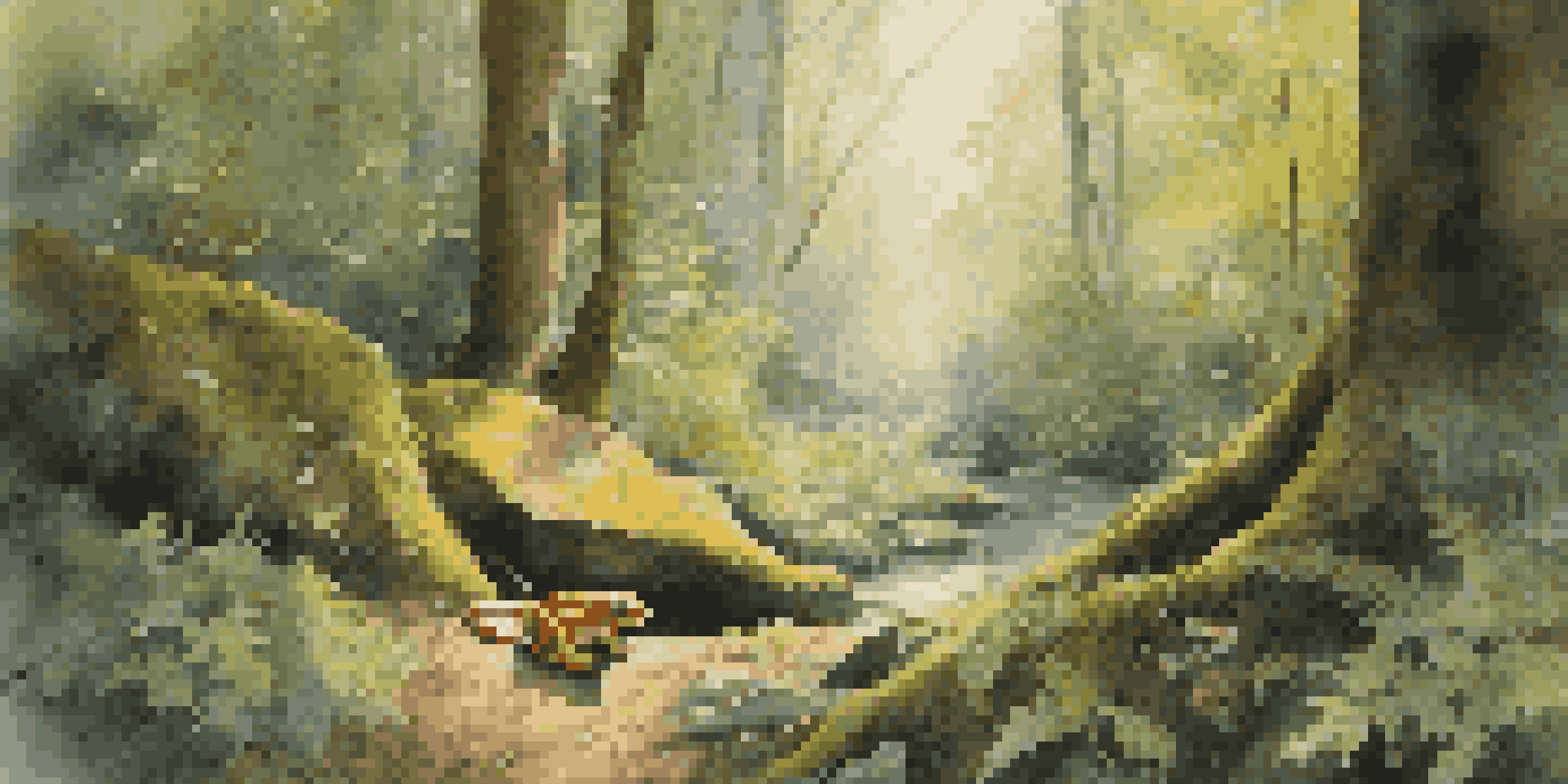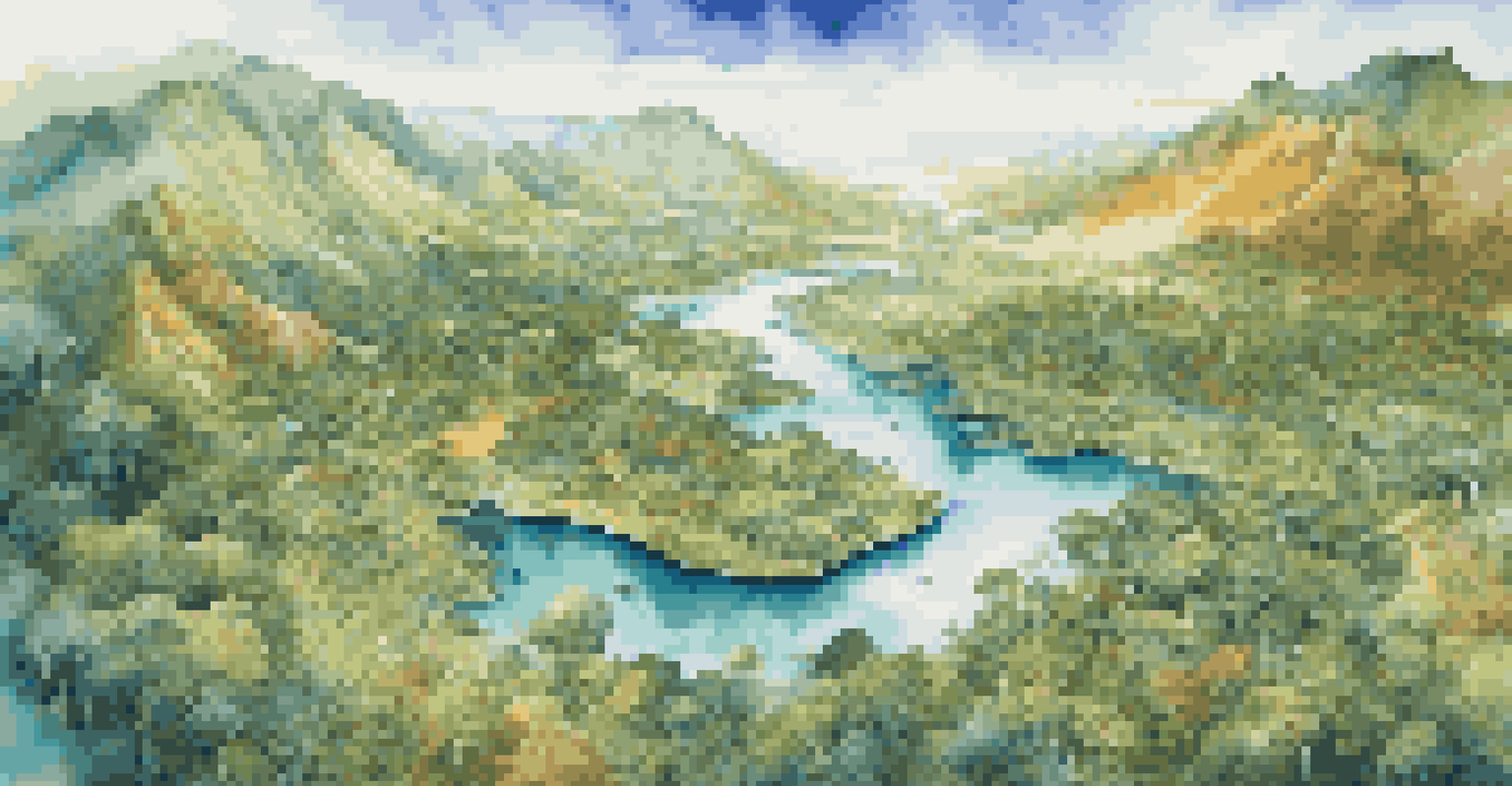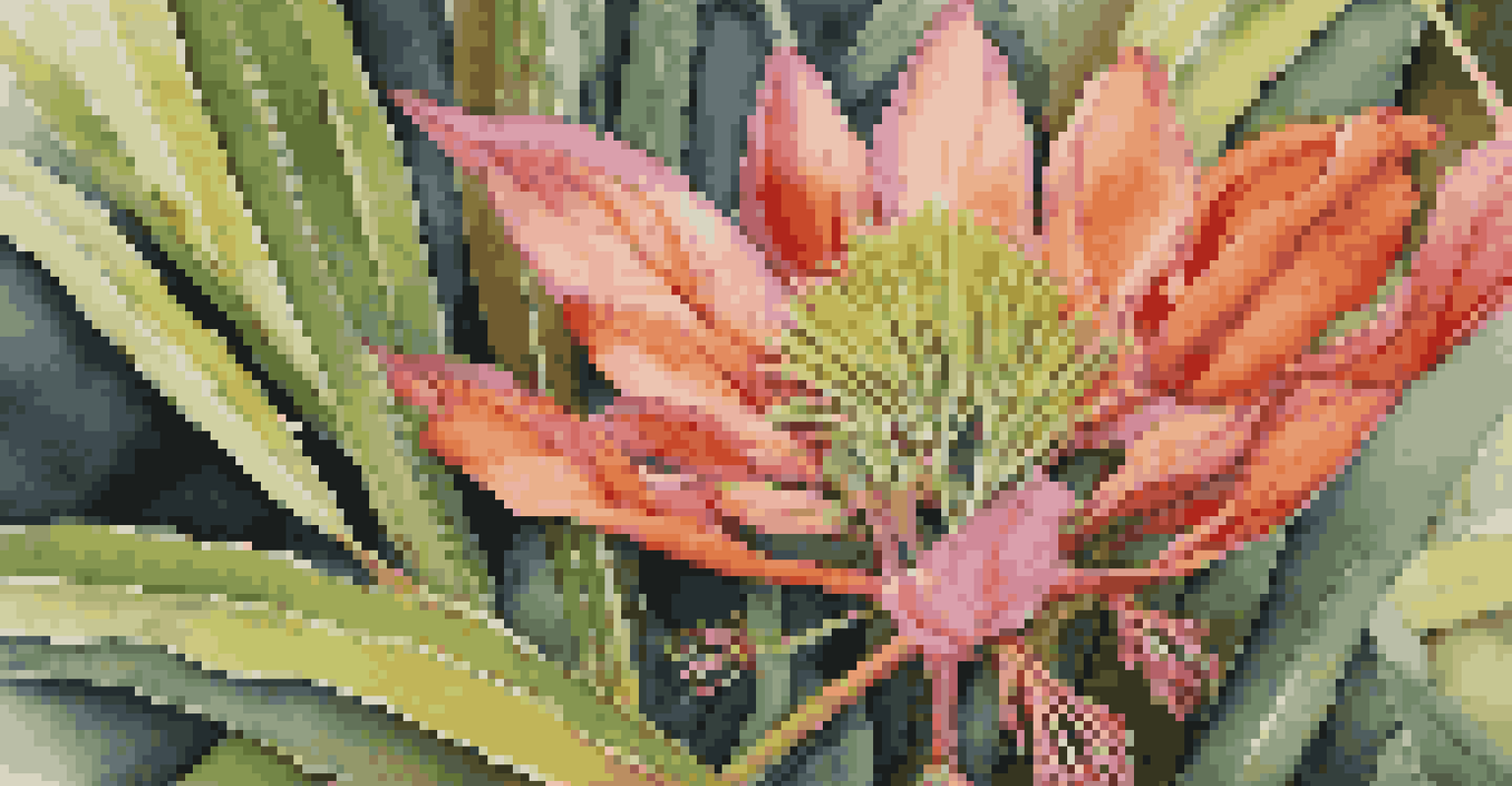Uncommon Wildlife: Discovering Nature in Unvisited Reserves

The Allure of Unvisited Wildlife Reserves
While popular national parks attract throngs of visitors, unvisited wildlife reserves hold a unique charm. These hidden gems often boast diverse ecosystems that remain largely untouched by human activity. By venturing into these lesser-known areas, you can discover species and landscapes that are often overlooked.
In every walk with nature one receives far more than he seeks.
Imagine walking through untouched forests, where the only sounds are the rustling leaves and distant animal calls. Each step brings the thrill of encountering wildlife that has seldom seen human presence. This sense of discovery adds an exhilarating layer to any nature adventure, making it memorable.
Moreover, visiting these reserves often means fewer crowds, allowing for a more intimate experience with nature. You can take your time, soak in the sights, and truly engage with the environment around you, fostering a deeper appreciation for the natural world.
Unique Flora and Fauna Await
One of the most exciting aspects of exploring unvisited reserves is the chance to encounter unique flora and fauna. Many of these areas host endemic species, plants and animals that are not found anywhere else on the planet. This biodiversity is a treasure trove for nature enthusiasts and scientists alike.

For instance, consider the elusive golden toad, which resides in specific high-altitude clouds forests. Sightings are rare due to its limited habitat, making every encounter a remarkable event. These experiences can ignite a passion for conservation as you witness the fragility of these ecosystems firsthand.
Discover Unique Wildlife Experiences
Unvisited wildlife reserves offer the chance to encounter rare flora and fauna, providing unforgettable adventures in nature.
In addition to rare species, the plant life in these reserves often tells a story of adaptation and resilience. From vibrant wildflowers to towering trees, these plants have evolved in isolation, offering a fascinating glimpse into nature's creativity and survival tactics.
The Importance of Conservation Efforts
Unvisited reserves play a crucial role in conservation efforts. They serve as sanctuaries for endangered species and provide critical habitats that support biodiversity. By protecting these areas, we ensure that future generations can appreciate their natural wonders.
The Earth has music for those who listen.
Moreover, these reserves often help scientists monitor ecological changes and understand the impacts of climate change. Researchers can study untouched ecosystems to gather data that informs conservation strategies and policy decisions. Every visit contributes to a broader understanding of our planet’s health.
Visiting these sites not only enhances your appreciation for nature but also supports local conservation initiatives. Many parks depend on visitor fees to fund maintenance and protection efforts, creating a sustainable loop of support and preservation.
How to Prepare for Your Adventure
Preparing for a trip to an unvisited reserve requires a bit more planning than a typical tourist destination. Research is key; understanding the terrain, wildlife, and weather conditions can make your experience safer and more enjoyable. Equip yourself with maps, guides, and local insights to ensure a smooth journey.
Additionally, packing the right gear is essential. Sturdy hiking boots, weather-appropriate clothing, and essential supplies like water and snacks are crucial for comfort and safety. Don’t forget a good pair of binoculars for wildlife spotting and a camera to capture the breathtaking moments.
Support Conservation Efforts
Visiting these lesser-known areas contributes to conservation initiatives, ensuring the protection of endangered species and habitats.
Lastly, consider the ethical implications of your visit. Stay on marked trails, respect wildlife, and leave no trace behind. Being a responsible visitor ensures these natural wonders remain pristine for others to enjoy.
Engaging with Local Communities
Visiting lesser-known reserves often provides the opportunity to engage with local communities. These interactions can enrich your experience as you learn about their culture, traditions, and connection to the land. Local guides can also offer invaluable insights into the wildlife and ecosystems, enhancing your understanding of the area.
By supporting local businesses and eco-tourism initiatives, you contribute to the sustainability of the region. This not only aids the community's economy but also promotes conservation efforts, creating a beneficial cycle for both visitors and residents.
Moreover, these connections can foster a sense of stewardship and responsibility towards nature. When you understand the local perspective and the challenges they face, it deepens your commitment to preserving these unique environments.
Capturing the Experience: Photography Tips
Photography is a fantastic way to document your journey through unvisited reserves. To capture the essence of wildlife and landscapes, consider the golden hour—early morning or late afternoon—when the light is soft and warm. This natural lighting enhances the colors and textures of your surroundings.
Don't hesitate to experiment with different perspectives. Get low to the ground to capture the intricate details of plants or shoot from above to showcase vast landscapes. By varying your angle, you can tell a more compelling story through your images.
Engage with Local Communities
Exploring unvisited reserves allows for meaningful interactions with local cultures, promoting sustainable tourism and deeper appreciation for the land.
Finally, patience is key. Wildlife photography often requires waiting for the perfect moment. Whether it’s a bird taking flight or a deer grazing, being still and observant can lead to stunning captures that truly reflect the beauty of these unvisited reserves.
The Future of Unvisited Reserves
As awareness of biodiversity and conservation grows, the future of unvisited reserves looks promising. Increased interest in eco-tourism has led to more funding and protection for these areas. This shift allows us to preserve the planet's natural treasures while also providing unique experiences for adventurers.
However, with popularity comes responsibility. It’s essential to maintain a balance between conservation and tourism to ensure these ecosystems remain intact. Sustainable practices, such as limiting visitor numbers and promoting responsible behavior, are vital to protecting these natural wonders.

Ultimately, the future of unvisited reserves depends on our collective efforts. By advocating for their protection and promoting responsible tourism, we can ensure that these hidden gems remain for generations to come, offering a sanctuary for both wildlife and those who seek to connect with nature.